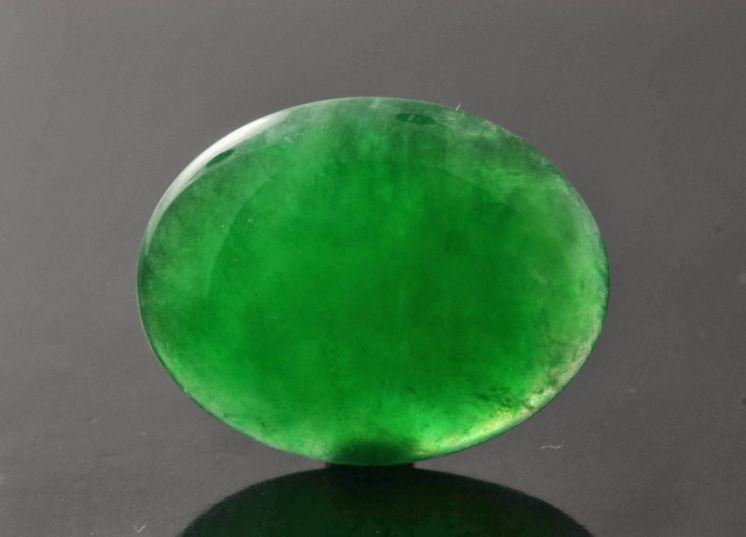
888 Auctions JadeLab laboratories provide professional, objective, and accurate identification service for those in the trade and for the public. If you are unsure about the quality of your jadeite or whether it is jadeite at all, we deploy “non-destructive” methods to definitively determine both the correct identification of jadeite and grade classification of jadeite.
Why 888 Auctions’ JadeLab Laboratories?
An eye test or even standard gemological testing is usually inconclusive in making a conclusion whether or not a piece is ‘A’ or ‘B’ jade. Although measuring the refractive index and density is useful in distinguishing items made of real jade from other jade simulants, definitively determining the grade of jade is impossible without an infra-red spectrometer. This non-destructive method can test for the presence of polymers within a jade’s interior clearly and quickly. Polymers leave a distinct tell-tall trace in the infra-red spectrum – traces with which 888 Auctions JadeLab laboratories are fully capable of detecting and identifying.
If you are curious or concerned about the identification of your items and the quality of your jade, 888 Auctions JadeLab is currently the only commercial firm in Canada equipped with its own infrared spectrometer capable of identifying treated jadeite (‘B’ jade) with an infrared spectrometer and use infrared spectroscopy to test for polymer impregnation.
Whether you simply wish to know the quality of your jewellery or wish to appraise your jewellery for the purposes of selling through our monthly auctions, 888 Auctions JadeLab can ensure your jewellery is handled objectively, identified accurately, and sold at a very competitive price.
Services and Reports
888 Auctions JadeLab offers the following information:
Description
- Shape: Most commonly seen as oval cabochons, bangles, pendants, or fancy shapes and carvings, etc.
- Weight :Each piece is weighted on an electronic digital balance to the thousandth of a carat (ct).
- Measurements: Dimensions (length, width, depth) are measured in millimetre (mm)
- Transparency: Degree of transparency is graded as follows:
- Transparency
- Semi-Transparent
- Translucent
- Semi-Translucent
- Opaque
- Colour: Colour is measured according to the following standards:
- Evenness: colour distribution is described as even to uneven, in patches and/or veins and spots.
- Tone: depth of tone is described from light to dark.
- Hue: description of colour (e.g. bright green, green, greyish, white, lavender, red, orange, black, etc.).
Tests and Findings
- Refractive Index: Average refractive index for jadeite ranges from 1.66 to 1.68
- Fluorescence: Object will eject visible light, namely long-wave and short-wave ultraviolet light, when subjected to ultraviolet radiation. Most of the natural jadeites do not release any ultraviolet light under this treatment. When a jadeite contains foreign bodies, weak chalky white/blue ultraviolet light will be shown, while chemically treated jadeite will release strong chalky white/blue light.
- Spectroscope: Natural jadeite of bright green colour will show fine chrome lines in the red area of the spectrum, whereas a dyed jadeite will show a wide band in the red area.
- Polymer Detection & Infrared Spectrum: It can be detected that whether the tested jadeite has polymer or excessive wax. Chemically treated jadeite normally contains polymer.
- Four Categories of Jadeite
The following four categories are classified as jadeite:
- Natural untreated jadeite (‘A’ Jade)
Refers to natural jadeite which is not subject to any form of chemical treatment except those traditional processes such as plum juice washing and wax polishing. These procedures are internationally recognized as standard practice and are not defined as “treatment” because the structure of the jadeite has not been damaged.
- Chemically bleached and polymer impregnated jadeite (‘B’ Jade)
Refers to jadeite which has been chemically bleached to remove the impurities. It is further rinsed with caustic soda and followed by impregnation of polymer to enhance its translucency. The structure of jadeite is damaged through this treatment and it will lose its lustre once the polymer deteriorates with the lapse of time. In addition, “B” jade cannot withstand heat and pressure.
- Chemically bleached, polymer-impregnated, dyed jadeite (‘C’ Jade)
- Dyed jadeite with no polymer present (‘D’ Jade)
Jadeite Stimulants
Nephrite and Jadeite have specific densities for which 888 Auctions JadeLab can accurately measure and subsequently distinguish from jadeite simulants currently being sold on the market mistakenly or intentionally. The following list is by no means comprehensive, but is rather a collection most commonly mistaken for jade:
- Aventurine
- Calcite
- Carnelian
- Chrysoprase
- Emerald
- Grossularite
- Jasper
- Maw Sit Sit
- Quartzes
- Rhodonite
- Saussurite
- Serpentine
- Soapstone
This alphabetical listing is by no means complete with the great number of other stone materials that have been mistaken for jade. Amber has also been taken for red jade. All this may derive from the fact that the Chinese historically called any stone that appeared beautiful jade leading to a great many misconceptions.
Rather than relying upon inconclusive testing and hearsay from dealers to determine the quality of your jade, 888 Auctions JadeLab will conclusively determine the quality of your jade.
Contact 888 Auctions JadeLab Services
If you wish to contact us in regards to unbiased grading and analysis or any other enquiries, contact us by email or by phone.
888 Auctions
15-280 West Beaver Creek
Richmond Hill, Ontario
Canada
L4B 3Z1
Phone: (905) 763-7201
Fax: (905) 763-1872
Email: [email protected]
Showroom Office Hours
Monday-Friday 10:30 AM – 6:00 PM
Saturday 10:30 AM – 5:00 PM
